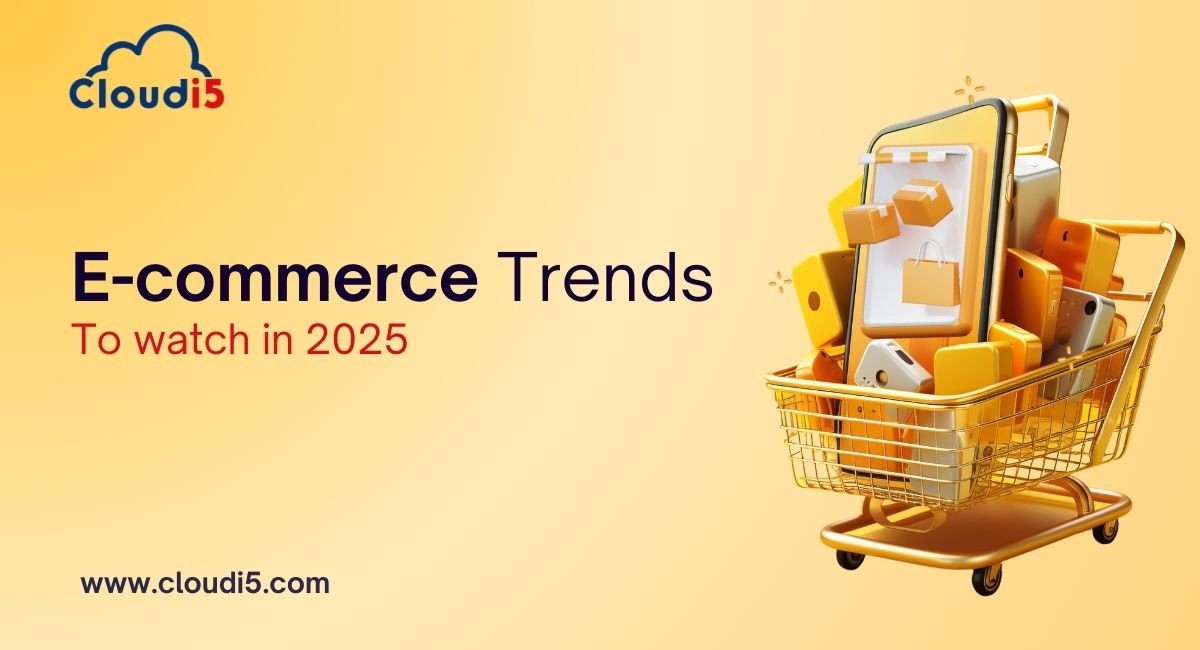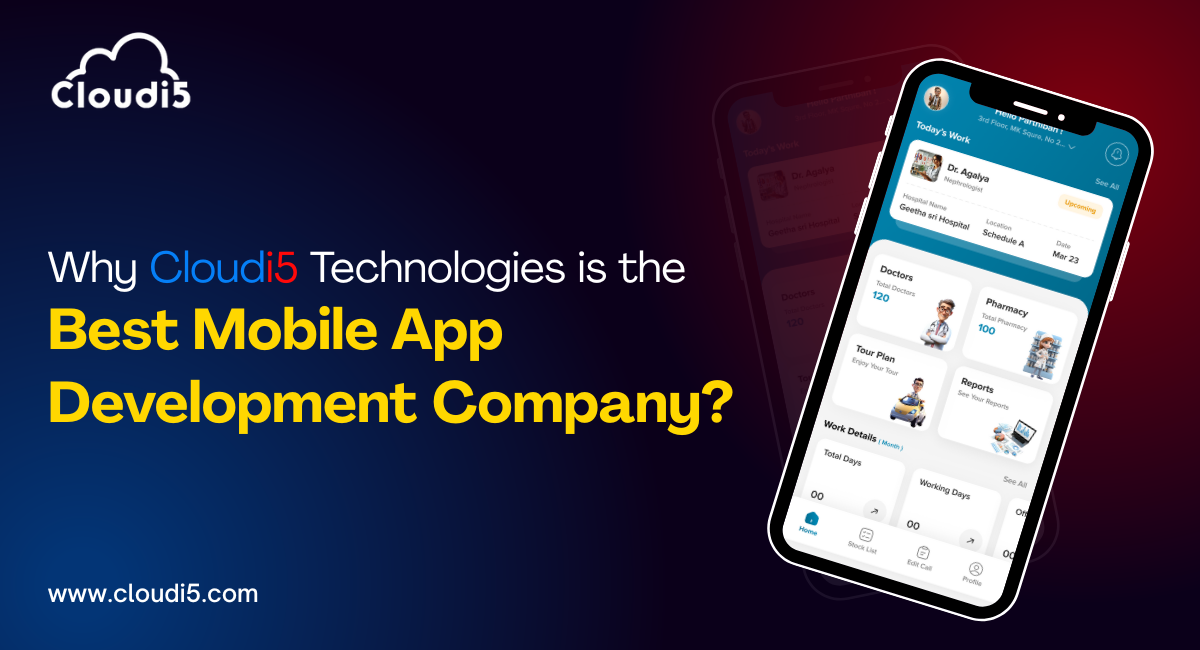
E-commerce Trends To Watch In 2025
Alright, Cloudi5 fam, it’s 2025 and online shopping is about to hit next level. Forget scrolling through endless pages — now we’re talking virtual try-ons, AI that gets your style better than your best friend, and shopping with just a voice command. The way we buy stuff is changing faster than your TikTok FYP, and trust me, it’s wild. If you thought e-commerce was cool before, get ready for the real upgrade.
So, let's spill the tea on the future of e-commerce and what's coming your way.
Trend 1: The Rise of AI and Machine Learning
Artificial Intelligence (AI) and Machine Learning (ML) aren’t just sci-fi buzzwords anymore. They’re transforming how we shop online. By analyzing tons of data, AI and ML help businesses make smart decisions, improve customer experiences, and keep everything running smoothly.
How AI and ML are Shaping E-commerce:
- Personalized Product Recommendations:
AI algorithms look at what customers have browsed, bought, and liked to recommend products that are just right for them. This personalization makes shoppers feel understood, leading to happier customers and higher sales. - Chatbots and Virtual Assistants:
AI-powered chatbots offer 24/7 support, answering questions, helping with problems, and guiding customers as they shop. These smart assistants speed up customer service and make it easier for customers to get help anytime they need it. - Predictive Analytics for Inventory Management:
AI analyzes past sales and market trends to predict what products will be in demand. This helps businesses keep the right amount of stock — not too little, not too much — which saves money and keeps products available. - Fraud Detection and Prevention:
AI can detect unusual patterns in purchases to spot potential fraud. This protects both businesses and customers by keeping transactions safe and secure.
Benefits of AI and ML for Everyone:
- Better Shopping Experiences: Shoppers get recommendations they’ll love, quick support, and a smooth shopping process.
- Boosted Sales and Revenue: Happy customers lead to more sales, and streamlined operations keep costs down.
- Optimized Inventory: With smarter stock management, businesses can reduce waste and save money.
- Increased Security: AI helps prevent fraud, keeping customer info safe and secure.
- Data-Driven Decisions: AI provides valuable insights, helping businesses make smart, data-based choices.
As AI and ML advance, their role in e-commerce will only grow. By adopting these technologies, businesses can stay ahead and deliver top-notch shopping experiences.
Trend 2: The Power of Social Commerce
Social commerce is all about making shopping happen directly on social media. It combines the fun of social media with the convenience of online shopping, letting people buy products without ever leaving their favorite social apps.
How Social Commerce is Shaping Online Shopping:
- Seamless Shopping Experience:
Social commerce lets people find, share, and buy products all within a single platform, like Instagram or TikTok, making the shopping process quick and easy. - Boosting Brand Awareness:
Social media platforms have huge audiences, so businesses can reach tons of potential customers simply by being active on them. - Direct Customer Engagement:
Social commerce allows brands to talk directly with customers, which helps build stronger connections and trust. - Using Influencers to Drive Sales:
Collaborating with influencers who have loyal followers can make products more visible, boosting brand awareness and sales.
Top Social Commerce Platforms and Their Key Features:
- Instagram Shopping:
Lets brands tag products in posts and stories, so people can buy them instantly. - Facebook Shops:
Gives businesses a virtual storefront where they can display and sell products directly on Facebook. - TikTok Shop:
Allows users to shop directly from TikTok videos, making shopping fun and interactive. - Pinterest Shopping:
Helps users discover and buy products through visually appealing boards.
Strategies to Drive Sales with Social Media:
- Share Exciting Content:
Use eye-catching photos, videos, and stories that grab the attention of your target audience. - Run Contests and Giveaways:
Encourage people to engage with your brand by offering prizes or discounts. - Team Up with Influencers:
Work with influencers to introduce your products to their followers. - Encourage Customer Posts:
Motivate happy customers to share photos of your products on social media. - Use Social Media Ads:
Target specific audiences with paid ads to increase visibility and sales.
Why Influencer Marketing and Customer Posts are Key:
- Authenticity:
Influencers and real customer posts feel more genuine and trustworthy than traditional ads. - Broader Reach:
Influencers have loyal followers, so partnering with them helps reach a wider audience. - Cost-Effective Marketing:
Content created by customers is often free and can still make a big impact. - Better Brand Reputation:
Positive posts from real customers boost trust and build a good brand reputation.
By adopting social commerce and creating strong strategies, businesses can leverage the power of social media to grow their sales, connect with their audience, and stay competitive.
Trend 3: The Growth of Mobile Commerce
Mobile phones are a huge part of our lives, and their role in online shopping is only growing. The rise in mobile shopping, or m-commerce, is making it easier than ever to shop on the go.
Why Mobile Commerce is Growing:
- Portability and Convenience:
With mobile devices, people can shop from anywhere, anytime. - Quick Access to Information:
Shoppers can easily check prices, read reviews, and research products on their phones. - Easy Checkout:
Mobile payment options and digital wallets make checkout fast and simple.
The Need for Mobile-Friendly Websites and Apps:
- Better User Experience:
Websites and apps designed for mobile provide a smooth shopping experience on small screens. - Fast Load Times:
Optimized mobile sites load quickly, which helps keep users engaged. - Enhanced Engagement:
Mobile features like push notifications and personalized recommendations can keep users interested.
Popular Mobile Payment Options:
- Digital Wallets:
Services like Apple Pay, Google Pay, and Samsung Pay offer secure, easy payments. - Payment Apps:
Apps like PayPal and Venmo let users pay straight from their phones. - QR Code Payments:
QR codes make payments quick and convenient, especially in places where card use is less common.
Mobile Marketing Strategies:
- SMS Marketing:
Text messages can share deals, reminders, and updates with customers. - Push Notifications:
Real-time alerts keep customers in the loop about sales or new arrivals. - App Store Marketing:
Promoting apps in app stores helps attract more users.
Trend 4: The Focus on Sustainability and Ethical Sourcing
People are more aware than ever about the environmental and social impact of their purchases. This awareness is creating demand for sustainable and ethically sourced products.
Making E-commerce More Sustainable:
- Eco-Friendly Packaging:
Using recycled or biodegradable materials for packaging. - Ethical Sourcing:
Working with suppliers who follow fair labor and environmental practices. - Carbon-Neutral Shipping:
Reducing shipping emissions through eco-friendly practices. - Transparent Supply Chains:
Showing customers where products come from and how they’re made.
Trend 5: The Power of Voice Commerce
Voice commerce, through assistants like Amazon Alexa and Google Assistant, is changing how people shop by making the process hands-free and easy.
Benefits of Voice Commerce:
- Hands-Free Shopping:
People can buy products without having to click or type. - Natural Search:
Voice search lets people ask for products in a more natural, conversational way. - Personalized Suggestions:
Voice assistants can offer recommendations based on user preferences.
Tips for Optimizing for Voice Search:
- Keyword Optimization:
Use keywords that match what people are likely to say in voice searches. - Structured Data:
Add data that helps search engines understand your content better. - Long-Tail Keywords:
Focus on specific phrases people might use when speaking.
Voice Commerce for Niche Products:
Voice search can be especially helpful for finding niche or unique products that are hard to find through regular searches.
Conclusion
The future of e-commerce is all about innovation, personalization, and sustainability. By keeping up with these trends, businesses can stay competitive, create great shopping experiences, and grow. As technology continues to advance, we can expect even more exciting changes in e-commerce, like improvements in AI, augmented reality, and blockchain. Staying up-to-date with these trends will be key to thriving in the evolving world of online shopping.
Trusted By












Leave Comments